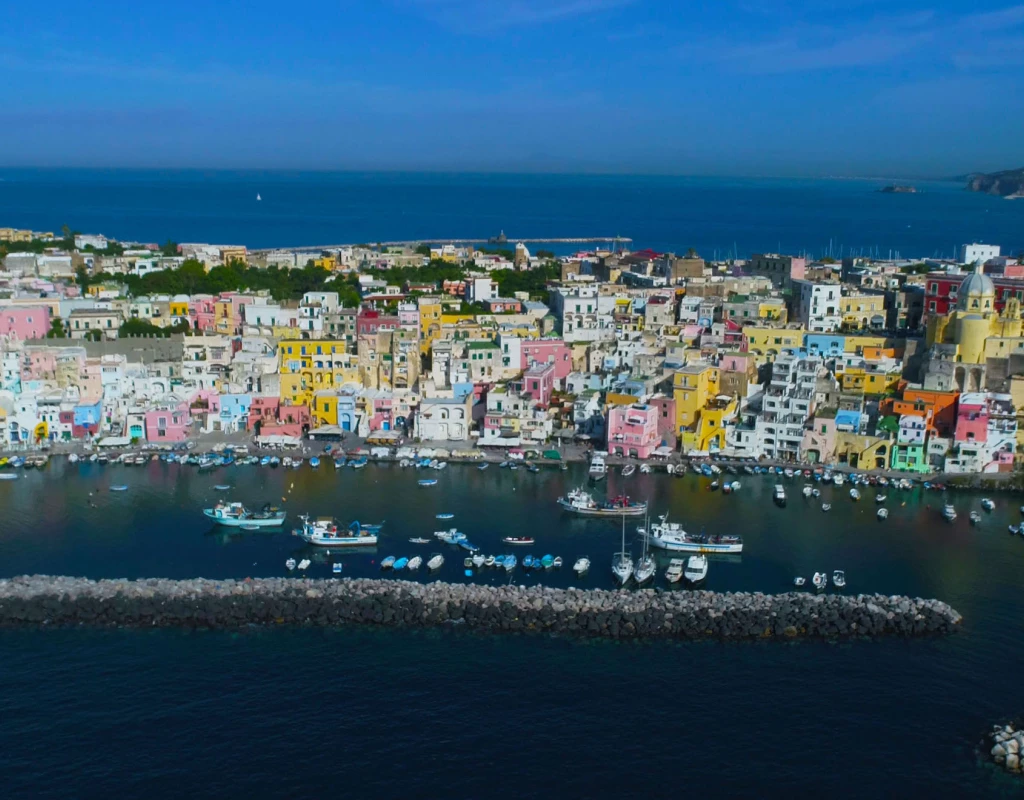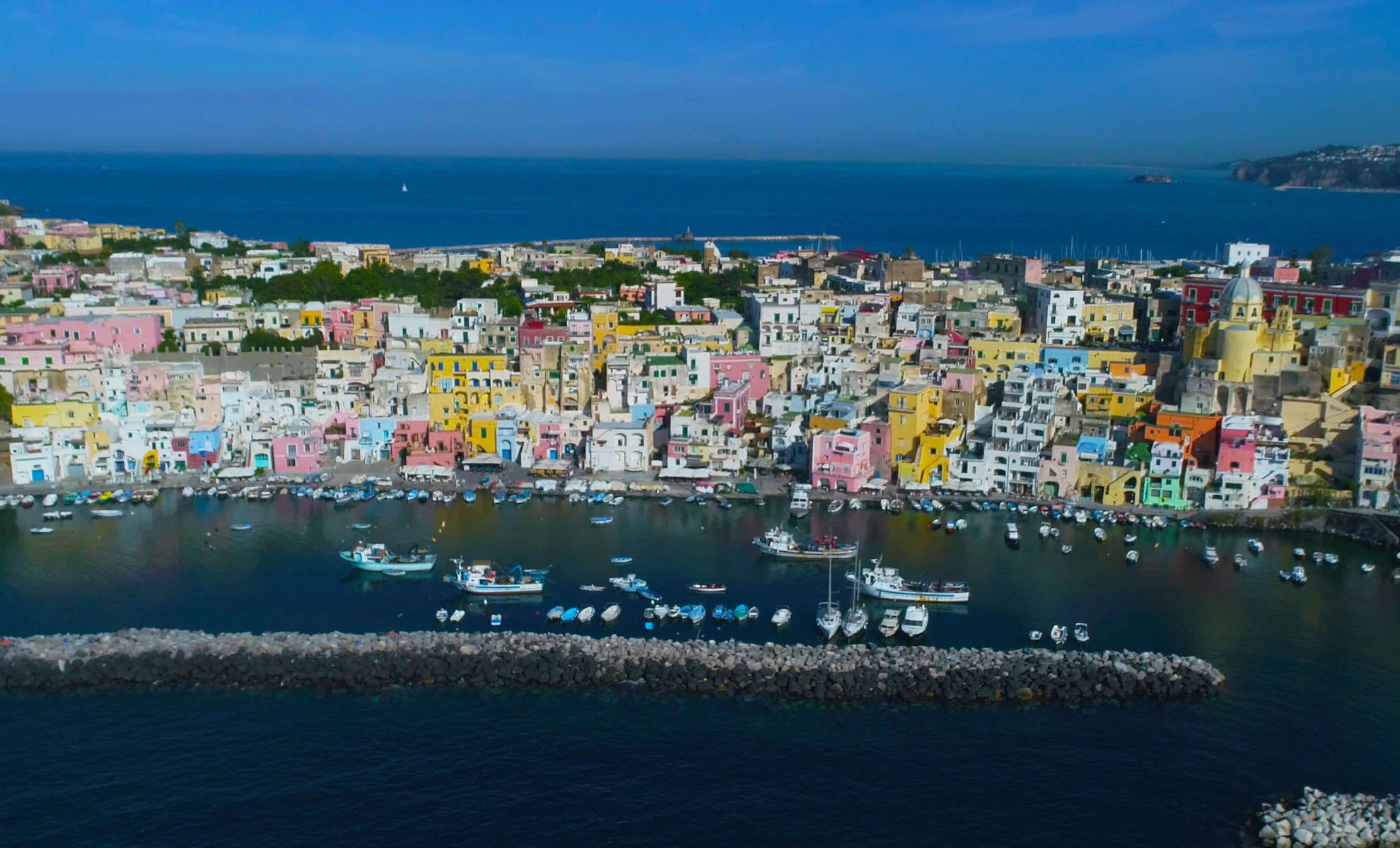Early in the morning you can hear the sound of the waves swinging the boats moored in the harbor. On one of these, a fisherman unravels the anchovies got caught in the nets, one by one. All around the harbor, the village of Corricella looks like suspended in its eternal tranquillity.
Ph. Enrico Nocera
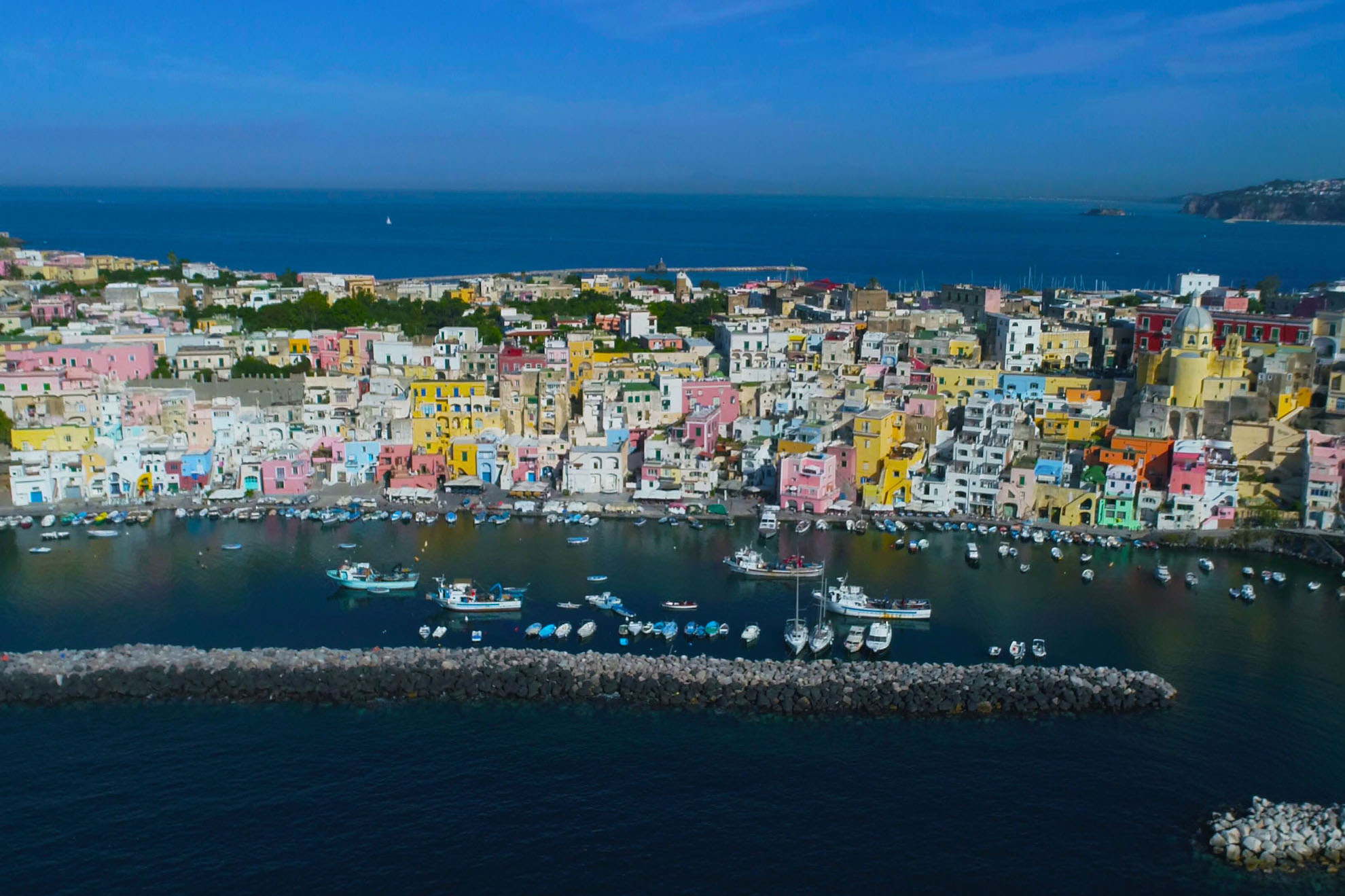
We are in the most ancient and suggestive places of the island of Procida. Known as a small fishing village since the seventeenth century, the Marina di Corricella is a mosaic of houses, domes, narrow streets and arches scattered along the steep descent towards the sea. The colors of the facades are pastel, typical of the Mediterranean island: the warm cheerfulness of the white, above all; then yellow, pink, blue, red, green. A painting that impresses itself in the eye of a traveler, obeserving from the top of Terra Murata, a privileged point to admire Corricella in every corner.
«Oh, I wouldn’t be a seagull or a dolphin; I'd be happy to be a scorpion fish - the ugliest fish of the sea - just to find myself there, joking in that water»Elsa Morante - “Arturo's island”
This village contains all the essence of the Procida island and the Campi Flegrei. Pastel colors but not only: there are other elements that paint the wonderful picture of this strip of Campania. The volcanic nature of the soil, above all. Procida, as well as the nearby villages of the mainland, arises from eruptions of at least four different craters, now dormant and largely submerged. In the village of Corricella, the volcanic nature of the soil is underlined by the tuff ribs that surround the traveler’s gaze. From the square above, dedicated to the Martyrs, you can walk towards the port and the docks.
Terra Murata overlooks the village of Corricella | Ph. Enrico Nocera
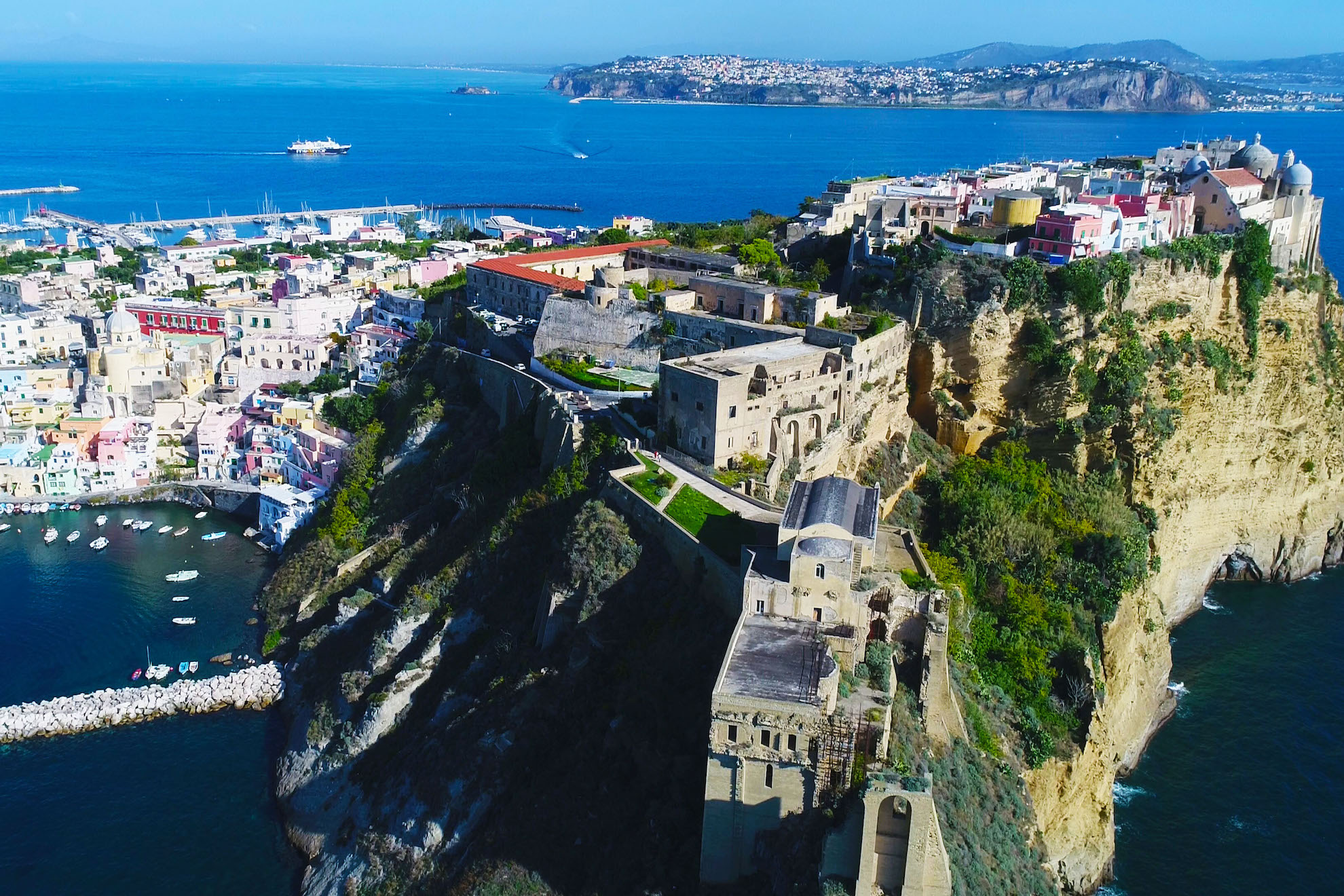
A breath of sea air and a small walk along the port. Corricella looks at the Mediterranean, placed as it is along the coast with its back to the Gulf of Naples. Here, even today, fishermen prepare themselves for the long nights between traps and nets, and come back only at dawn with their load of fish. A millenary tradition that survives thanks to those who have not left the island nor abandoned this little jewel of Mediterranean architecture.
Corricella absorbed the soul and the traces of the people lived there, since ancient times. In fact, Procida was the first of the Gulf islands to be colonized by human beings. First Mycenaeans, around the Fifteenth Century BC; then the Calcidesi settlers, from Eubea, and later the Greeks. They imported a colorful, lively and airy architecture which fully represented the warm and windy atmosphere of the Mediterranean. It’s no coincidence that, even today, the Greek islands are so similar to these villages made of arches, loggias and intricate lanes.
Ph. Enrico Nocera
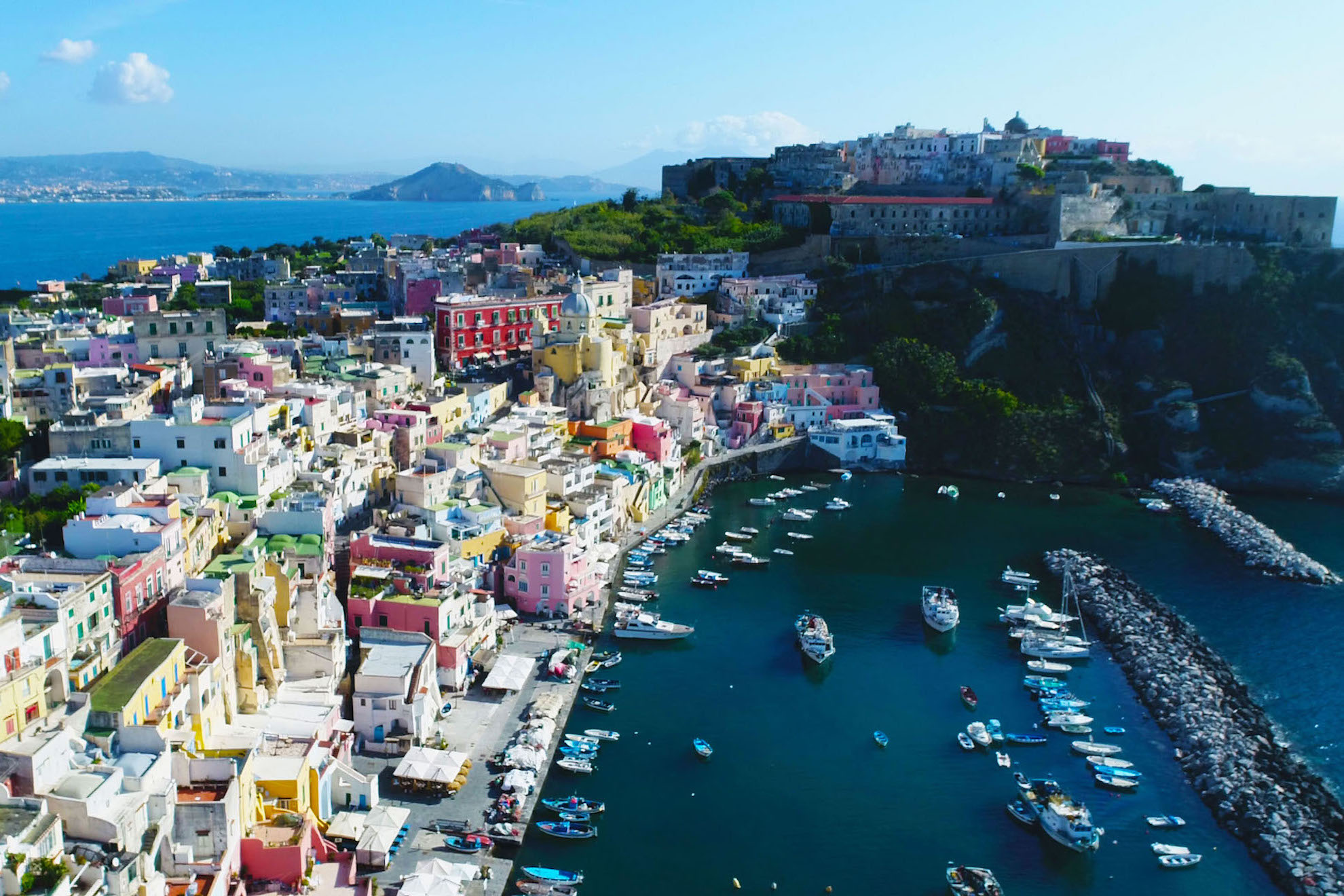
Corricella is the “summa” of the Procidan atmosphere. Here, where Massimo Troisi and Michael Radford shot the movie “The Postman”, time seems to flow according to its natural rhythms: slowly, without any frenzy, appease by the undertow that brushes the water edge.
